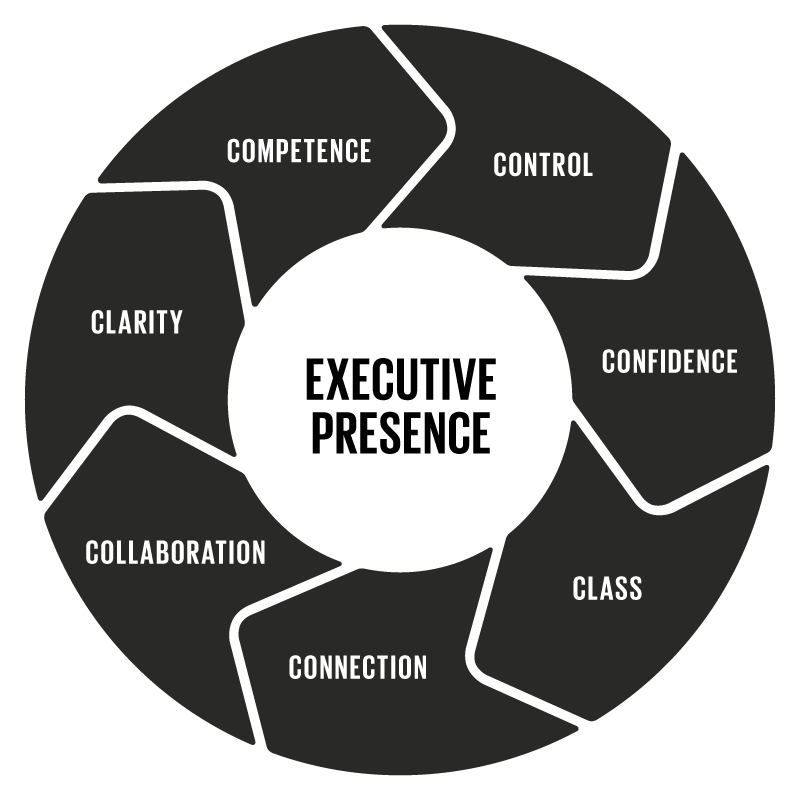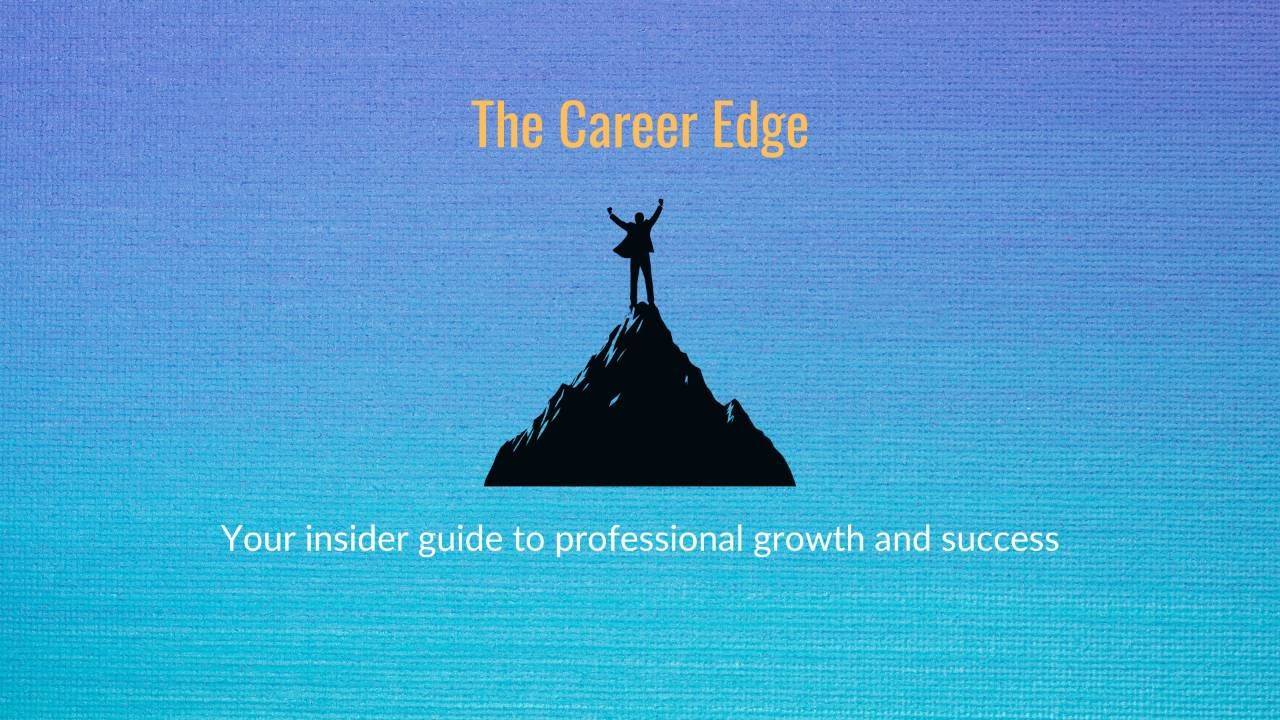8 Blind Spots That Erode Performance

I'd been working with Vinay for four months and he was absolutely ready for interview show time.
He had an accomplished technology executive sales and biz dev track record. His team leadership was impactful. He had big brand names like Microsoft and Google on his work experience lineup. And he had quantifiable revenue numbers to prove his value.
We'd defined his executive brand, mapped out his specific action and networking plan. His resume and LinkedIn profile looked incredible and impressive.
When he started actively interviewing I was certain he was going to get multiple offers.
On multiple occasions, he was one of the final candidates.
But he didn't get the offer.
Both Vinay and I were completely perplexed. So we did an interview role play session. And what surfaced from that session was:
One Big Giant Blindspot.
One of Vinay's core values was Humility. It was one of the reasons why his team absolutely loved him.
But it also held him back from owning his worth and confidently speaking to his accomplishments in the interview process. He was being to humble in the interview and the hiring manager wasn't seeing his impact.
After this aha moment for both of us, I started really paying attention to the blind spots that surfaced again and again with my leadership clients.
It's my hope that you'll unlock at least one aha moment and thus a new level of growth in your leadership.
The 8 Most Common Blind Spots
Here’s the leadership blind spot rollup aka 'playbook' broken into 8 critical areas.
As you read through this, do a quick self assessment. Rate yourself 1–10 on each, where 10 = “No problem for me. I’ve 100% got this” and 1 = “Whoa. Blind spot. Got work to do here”
1. Executive-Level Communication

Blind Spot: Not knowing the language of execs.
There's a saying that fits perfectly here...
"What got you here, won't get you there"
And this is true when it comes to communication.
If you've spent any time around or at the table with execs, you know that they speak a different language.
Concise. To the Point. Impact-Led. Intentional. Prepared. Decisive.
One of the biggest gaps my clients realize and want help with is mastering exec-level communication. The most common blind spot is going into a meeting with lots of things to say but not getting to the point.
There's little clarity on what they actually want to say.
Before you enter a conversation, pause and decide:
-
What’s my ask?
-
Why does it matter for the business?
-
How can I say this in one sentence (vs one page)?
If you can’t answer those three, you’re not ready yet.
Also, think about who’s on the other side of the table. In my last newsletter, I broke down the different communication styles using the Myers-Briggs Framework.
Execs are typically data-oriented, they either lead or land with numbers. If they’re big-picture, give vision first, then facts. Adapting to how they take in information makes it easier for them to act on what you’re saying.
Don't “word-vomit.” In order to gain credibility an executive level, you’ve got to nail your main point quickly.
Watch for filler words — “um,” “uh,” “just,” “sorry but.” They dilute your credibility. And if you get a hard question, don’t start talking around it. Pause, collect your thought, and answer directly.
If you don't have the answer, don't bullshit. Execs are going to see through it in a heartbeat. Own the fact you don't have the data right now, take responsibility to follow up, and make sure you get (and provide) the answer when you said you would.
One of my leadership clients explained that she kept losing the (exec) room because she gave so much background before making a point.
We practiced a new rhythm: start with the decision needed, then one fact to anchor it.
The next time, she opened with, “I need a decision on the new structure. The proposed structure will reduce duplicate work by 12%. Here’s the supporting data.”
The group immediately leaned in and approved it.
Here's how to overcome this blind spot:
-
For every meeting, write three bullets: Ask / Why / Data.
-
Rehearse your opening aloud (30 seconds max).
-
Use the “Rule of 3”: Here’s what we know. Here’s what’s at stake. Here’s what I recommend.
-
Record yourself explaining a project in under a minute. Notice where you added fluff or sounded unsure.
Clarity earns airtime. Brevity builds credibility. Let your words carry weight.
2. Problem vs Solution Approach

Blind Spot: Staying in problem mode.
People don’t promote problem-spotters; they promote solution-makers.
When you walk into a senior level conversation with only a list of issues, even if you're right, you leave people stuck, frustrated or worse, emotionally triggered.
Potentially the biggest issue of all with this blind spot is that you risk building a reputation as the problem child, the negative nelly or one big black cloud.
If your goal is to move decisions forward and/or move your career forward, you'll never achieve this by fixating only on the problems.
People who stand out, get decisions approved and are offered the promotions are the ones who bring solution(s).
When you spiral on what’s wrong — delays, reorg confusion, resource gaps — your language reflects it:
“We can’t … we don’t have … it’s blocked.”
Shift instead to outcome or solution focus:
- What result do we need?
- What solutions could get us there?
- What action is mine to take?
Even if the options aren’t perfect, you’ve shifted the conversation from frustration to focus.
Here's how to overcome this blind spot:
-
For any blocker, write down:
1️⃣ The result or outcome that's needed
2️⃣ Two or three possible fixes (with pros and cons)
3️⃣ The option you recommend -
Present it simply: “Here’s the situation. Here are the potential solutions. I recommend…”
A solutions mindset signals leadership readiness.
3. Lacking Strategic Thinking

Blind Spot: Getting stuck in today’s tasks.
If you only live in the weeds (emails, deadlines, firefighting), you look busy, not strategic.
Seeing the bigger picture is non-negotiable.
And a prerequisite to gaining a seat at the executive table.
Executives see beyond the day-to-day.
They think ahead and move with intention.
When pressure hits, it’s easy to live in reaction mode: answering emails, fighting fires, staying busy but not steering.
The leaders who rise above have managed the skill to “zoom out from the storm.”
They look around the corner, read what’s changing, and link their daily work to where the business is going.
Ask yourself three simple questions:
1️⃣ What’s happening in the market or with our customers that might change the game?
2️⃣ How does this project fit the long-term direction?
3️⃣ What ripple effect will today’s choice create three, six, twelve months from now?
For example, Indra Nooyi shifted PepsiCo toward healthier products long before consumers demanded it, positioning the company for long-term growth.
HBR’s How to Become More Strategic article found leaders who regularly set aside time to connect work to long-term goals make better calls in uncertainty and are significantly more likely to earn promotions.
Here's how to overcome this blind spot:
-
Block a recurring “deep thinking” slot to review your biggest needle-movers, business results or metrics, customer insights, or market trends.
-
For any major priority, write two sentences: (1) Here's how this connects to the top organizational fiscal year strategies, and (2) Here’s how this moves the business forward.
-
Before an update, check yourself: am I only explaining the "how" or activity, or am I addressing the "what" or impact and outcomes?
Strategic thinking is about stepping back from noise, aligning with organizational priorities, scanning what’s ahead, and choosing actions that position you and your team to win.
4. Not Embodying Executive Presence

Blind Spot: Unaware of how you show up.
The term executive presence is tossed around a lot. It sounds vague, a little elitist, like something only CEOs need.
But...
Executive readiness is bigger than that.
It’s the mix of skills, behaviors, and mindset that makes people trust you, follow you, and bet on you.
Coqual’s research shows executive presence drives 26% of promotion decisions:
67% gravitas (how you act under pressure)
28% communication
5% appearance
Calm, grounded, intentional.
People notice when someone owns a room without forcing it.
Exec presence is the quiet power that makes people trust you when the stakes are high.
It’s how you steady a room, connect with people, and guide them forward.
When pressure rises, many leaders default to extremes:
-
Some push too hard — over-explaining, talking faster, or bristling when challenged.
-
Others shrink — stressing, hedging, apologizing, or backing away.
The leaders who stand out stay centered. They know their material, keep an even pace, and stay authentic.
Here's how to overcome this blind spot:
-
Prepare: know your facts and the decision you’re driving.
-
Before entering, take one breath, get centered, and decide what energy you want to bring.
-
If tension spikes, pause for a beat before responding. Calm buys credibility.
Walk in like you belong there. Slow down. Speak like you’ve been invited to solve the problem only you can solve.
If you want a deeper dive on this subject, check out my Own The Room article.
5. Body Language & Style

Blind Spot: Sending the wrong nonverbal signals.
People are always watching.
It's wired into us to keep us safe. We form impressions before you even speak.
Online or in-person, your posture, gestures, and attire speak louder than words.
So, if your body language or style sends the wrong message, your words won’t save you.
We’ve all heard that 90% of communication is nonverbal.
The 90% figure traces back to Albert Mehrabian's research on body language. He broke down the components of a face-to-face conversation. He found that communication is 55% nonverbal, 38% vocal, and 7% words only.
According to Mehrabian, “When there are inconsistencies between attitudes communicated verbally and posturally, the postural component should dominate in determining the total attitude that is inferred.”
Here's a sticky way to remember this:
-
Predator – you don't want to show up controlling, invading personal space, too-long eye contact, stiff shoulders, sharp or raised voice at a volume 10/10 or higher, movements or words that intimidate.
-
Prey – you also don't want to unintintially come across as timid...hunched or taking less space, fidgety or restless, eyes down, apologetic tone, rushing, people pleasing or over-smiling.
-
Partner – this is where you want to be. Calm but not rigid, steady eye contact, gestures that frame points rather than compete, a voice at a calm 6–8 volume, polished, intentional appearance.
That “partner” space is where credibility lives. It’s about alignment between the message, body, and context.
Here's how to overcome this blind spot:
-
On video: set your camera at eye level, light your face, and keep the frame uncluttered.
-
In person: stand or sit tall with feet grounded; roll your shoulders back and find your centered power pose before you speak.
-
Keep gestures intentional, i.e., palms open, hands resting, or framing your point.
-
Choose clothing that supports your message and fits the setting. Avoid anything that's uncomfortable, makes you fidget or second-guess yourself.
-
If you tend to fill space with fast talk or extra smiles, pause instead; calm energy draws people in.
Body language and style are the silent “yes” or “no” people give you.
Make sure your nonverbal message is sending: I’m ready. You can trust me.
6. Lacking Emotional Intelligence

Blind Spot: Reacting instead of responding.
One of the biggest career derailers I see is the trigger → reaction loop.
Something happens — a tense review, a last-minute change, a sharp email, a side-eye look — and leaders get swept into control, blame, or shame.
The result: conversations stall, stress levels rise, relationships strain, and credibility drops.
The impact: a massive waste of time
Emotionally intelligent leaders know how to interrupt that loop. They notice the trigger, name what’s happening, navigate different personality styles and choose an outcome-focused response.
Lead with awareness, not reactivity.
Emotional intelligence is more than a "soft skill". It's beyond “being nice.” It’s the ability to understand your own emotions, read the room, and respond in a way that keeps trust and momentum alive.
Emotional intelligence is a prerequisite to executive leadership.
Studies show leaders with high EQ outperform peers on collaboration and decision-making by up to 20%.
For example, Jacinda Ardern’s empathetic leadership earned her team, and the world, trust in her decisions, even in crises.
Here's how to overcome this blind spot:
-
Name the trigger: When a conversation spikes your stress, silently note, “I’m triggered.”
-
Pause before speaking: Two slow breaths buy you clarity.
-
Shift to outcome: Ask, "What result do we need?" or "How can I help us get there?"
-
Reframe the story: If you catch yourself thinking, “They’re against me,” try, “They want clarity. How can I provide it?”
-
Be calm: Your steadiness helps the team settle and focus.
EQ isn’t about suppressing feelings; it’s about managing them so you can stay grounded, build trust, and lead through challenges with a clear head.
If you want a deeper and data driven dive on this topic, check out Dr. Daniel Goleman's revolutionary work and latest book, Optimal, on the subject.
7. Low Confidence & Charisma

Blind Spot: Not seeing your worth.
Confidence isn’t arrogance. It’s a belief in your value, vision and ability to deliver.
Charisma isn't about being the loudest in the room. It’s the energy that makes people lean in because you make them feel understood.
Both are about inspiring trust and movement.
There's a sweet spot needed with confidence, and I often see two blind spot traps:
-
Over-assertive: Rushing to prove yourself, filling silence, or pushing ideas so hard they piss people off or lose impact. Your big ego triggers others.
-
Understated: Holding back so much that people miss your insight or commitment. You're playing small. You're not seeing or owning your worth.
It can be easy to try to cover up lack of confidence. You might get aware with this short term, but lack of confidence will show and people pick it up quickly.
It's important to overcome this blind spot. Here's why:
- Recruiters need about 90 seconds to determine whether they would hire a candidate
- 93% of employers consider soft skills an “essential” or “very important” factor in hiring decisions
- 76% of recruiters reject candidates who seem arrogant
- Lack of confidence during the interview is why 40% of interviewers don’t take a candidate past the first stage
True confidence is steady and rooted in an empowered mental operating system and growth mindset. Charisma comes from presence and empathy.
Here's how to overcome this blind spot:
Before a key interaction, ground yourself.
Raise awareness of the story you're telling yourself. If it's fear-based, flip your script so that it's based in your truth.
"They're going to critique me" flips to "I'm ok. I'm prepared. I've got this"
Ask: What energy do I want to bring? How do I want people to feel after engaging with me? Then show up fully.
8. Trying to Do It All aka Not Delegating

Blind Spot: Rescuing others.
The clients who have the hardest time delegating are also the highest achievers. Having a high bar is a beautiful quality and likely one of the reasons you've achieved and risen to the level you're at.
The downside? Holding onto everything yourself is a fast track to burnout and a recipe to stall scale.
If you want to scale, you have to have a framework to grow and perhaps most importantly, get comfortable handing work over and holding others accountable.
When I'm coaching clients on this blind spot, I use a simple model with three layers:
1️⃣ Outcome – You need to be crystal clear about what needs to happen, what success looks like and how it's measured. “Do your job well” might be what you'd like your team to do, but it's a cop out. It's vague and unhelpful. Spell out the result and, if needed, the measure: Deliver X report by Friday with these metrics complete. Document and communicate this on a team and individual level.
2️⃣ Process – If you have smart people working for you, you shouldn't need to micromanage how they do their job. You should, however, hold them accountable for coming up with the solution and providing this to you. Recognize that different personalities may need more direction. Provide resources, examples, give context or milestones. Maybe it’s an all-hands for shared clarity, or a one-on-one for someone stuck on next steps.
3️⃣ Identity – This is where most delegation fails. And it's also where the blind spot lies. Leaders hold on because of a quiet story: No one will meet my quality bar… It’s faster if I do it myself. Without realizing it, they are rescueing their team members by swooping in and doing the work themselves - or - assuming no one can do it as good as they can. That’s an identity challenge, not a process problem. Ask yourself: Who am I being right now — controlling, rescuing, micromanaging? To delegate well, you may need to shift from controlling to trusting and rescuing to coaching.
A client taking over a new team kept rewriting their reports. We unpacked her worry about quality and walked through each layer: outcome (what she needed), process (how they’d deliver and how she was holding them accountable), and identity (trusting their ownership). Within weeks, she was handing off projects with clear success markers — and her team rose to the bar.
Here's how to overcome this blind spot:
-
For a task you’re holding, write: outcome, timeline, measure of success and how progress will be tracked.
-
Decide what guidance is needed: a quick milestone plan, an example or space for them to find their own path.
-
Check your being: are you clinging out of habit or fear? defaulting to rescuing or feeling like a victim to what's not working? Shift to curiosity, solution-focus and trust.
-
Celebrate small wins out loud. It signals confidence in their capability.
Delegation isn’t losing control; it’s building capacity in your people, and in yourself.
The Bottom Line
Blind spots don’t show up on your to-do list, but they show up in how people perceive your leadership.
Left unchecked, they quietly erode performance and stall promotions.
Want more?
If you've stayed with me to the end, I want to recognize you. Reply to this email and I'll send you a link to my Leadership Blind Spots mini-training.
The Weekly Edge
Blind spots don’t disappear overnight. They shrink when you shine a light on them.
Did you rate yourself 1-10 on each of these 8 blind spots? Which ones were the lowest for you?
This week, pick your lowest scoring blind spot. Maybe it’s over-explaining, defaulting to problem mode, or holding on to tasks too tightly.
Practice the fix. Reflect afterward:
-
How did the room shift?
-
Did people lean in differently?
-
Did your credibility rise when you showed up with more clarity, calm, or conviction?
That’s the power of addressing blind spots. Every small shift compounds into a stronger presence, better performance, and more trust in your leadership.
Clear the blind spots. Own the room. Lead like you mean it. Radiate your readiness. Watch how it changes the way people respond to you.
— Julie
Want To Work With Us?
1. Want to Stand Out On LinkedIn, Overcome Imposter Syndrome, get a personalized Leadership Impact Scorecard, or attend a live masterclass on Eliminating Blind Spots? Check out our new Resources page for free training and tips to help you get ahead.
2. Realizing it’s time for a Resume Revamp or LinkedIn Rewrite? Contact us for information about saving time and getting yourself a lasting career asset (or two) that will help you differentiate yourself, stand out from the competition, and, yes, that you’ll be proud of for years to come. Yes, AI can write you a resume. But beware of getting flagged or thrown out of the application process. You’re much better off investing in an asset you know is branded, quantified, and aligned to the perfect job you’re seeking
3. Ready to get the Expert Coaching Guidance to collapse your job search timeline or become highly impactful in your organization? Want to be that force multiplier for your team, stakeholders, and clients? These are just a few examples of what working with us 1:1 can do for you, your leadership, and your career. Set up a time to chat with us and see if it’s a fit.



Responses